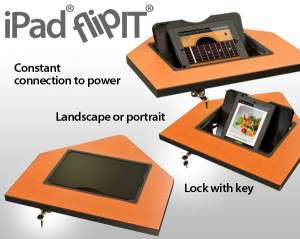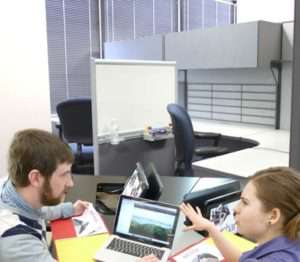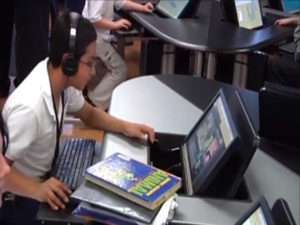SMARTdesks can help you embrace the challenge of digitizing your classroom and take advantage of increasing online classroom resources. We offer a variety of products that can make the transition easy. Here’s a list of products that are essential to making the transition to digital textbooks as smooth as possible.
1. The iPad FlipIT offers a lockable, flexible solution for classrooms looking to install iPads in their classroom desks and tables. Students can use the iPad in portrait and landscape mode in a securely enclosed and powered environment.
1. The iPad FlipIT offers a lockable, flexible solution for classrooms looking to install iPads in their classroom desks and tables. Students can use the iPad in portrait and landscape mode in a securely enclosed and powered environment.
2. Mobile Whiteboards and SMARTboards are a must-have for the digital classroom. Teachers can highlight important learning material. Students can write on the mobile board to engage with their subject matter and collaborate.
3. How to power all of these electronics without a mess of wires? The Floor + Furniture Integration Technology (FFIT) offers an easily reconfigurable solution for cable management. To see how it works, click here.
4. At the Jack Swigert Aerospace Academy’s Cyber Cafe, outfitted with Exchange collaboration tables, students are using technology on a daily basis for their research needs.
For some great insights into the pros and cons of digitizing libraries in the classroom, check out this interview with Nik Osborne, the Chief of Staff for the Vice President for Information Technology at Indiana University. According to Osborne, academic institutions have a role to play in the market for digital textbooks; it’s not just up to the student and book publisher to make classroom changes happen. For a look at how students use technology in and out of the classroom, check out these stats from the Educause Center for Analysis and Research.
The bottom line? The potential for innovation in the market is tremendous if institutions, publishers, and students to develop an interactive, lower-cost alternative to traditional print textbooks.
In your opinion…what are the advantages and disadvantages of a digital classroom?
The bottom line? The potential for innovation in the market is tremendous if institutions, publishers, and students to develop an interactive, lower-cost alternative to traditional print textbooks.
In your opinion…what are the advantages and disadvantages of a digital classroom?






